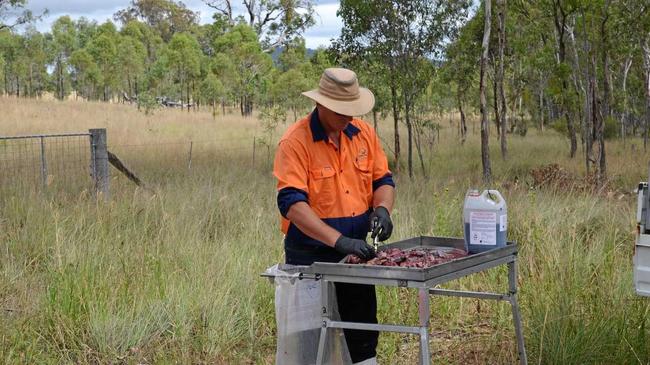LETTER TO THE EDITOR: 1080 baiting 'safe and effective'
SDRC councillor Cameron Gow discusses 1080 baiting.

Warwick
Don't miss out on the headlines from Warwick. Followed categories will be added to My News.
I MUST respond to the letter 'Not a fan of 1080 baiting' (WDN December 21).
Feral animals such as wild dogs inflict terrible pain and suffering on sheep, cattle, other livestock and domestic pets. They also have disastrous impacts on native fauna, not to mention the livelihoods and mental well-being of our farmers.
Council's wild dog control programs are guided by scientific research into best practice control methods. Research shows the most effective and efficient form of broadscale wild dog control is co-ordinated 1080 baiting.
In areas containing inaccessible breeding and dispersal habitat, this includes aerial 1080 baiting. The more comprehensive the baiting coverage, the greater the level of control achieved.
1080 is specifically targeted to dogs, foxes and cats - it is not an indiscriminate killer. Native animals have a high tolerance to the toxin as it is naturally occurring in a range of native plants.
It is true 1080 will kill anything if used at high enough concentrations, but the rates and distribution methods permitted for use in Queensland prevent this from happening.
The use of 1080 in Queensland is highly regulated through the Department of Agriculture and Fisheries and Queensland Health and the council's accredited operators are required to report routinely on usage.
Such agencies as CSIRO and the Queensland and New South Wales Governments have published scientific papers on beneficial impacts of aerial 1080 wild dog baiting to known spotted quoll populations, some of the research conducted in the Southern Downs region.
Queensland Parks and Wildlife Service employs 1080 ground and aerial baiting in national parks to protect endangered native animals such as the bridled nail-tail wallaby from feral predators such as wild dogs, foxes and cats.
It is also worth noting the increase in the incidence of remote camera captures of native fauna since the introduction of council's aerial baiting program in the Traprock region.
Lyre birds, spotted quolls, scrub turkeys and koalas have all been captured on camera following the first few aerial baiting programs.
These were not seen when council's monitoring commenced. Feedback given by landholders is telling council officers that since the introduction of the council's aerial baiting programs, they are increasingly noticing a return of native wildlife to their properties.
Council doesn't suggest eradication is realistic for any widespread, established invasive pest and is not the aim of the Invasive Pests Control Scheme.
Council expects all landowners to control invasive pests so as to reduce their spread and the impacts they may impose to other lands and owners of those lands.
Cameron Gow, Southern Downs councillor


